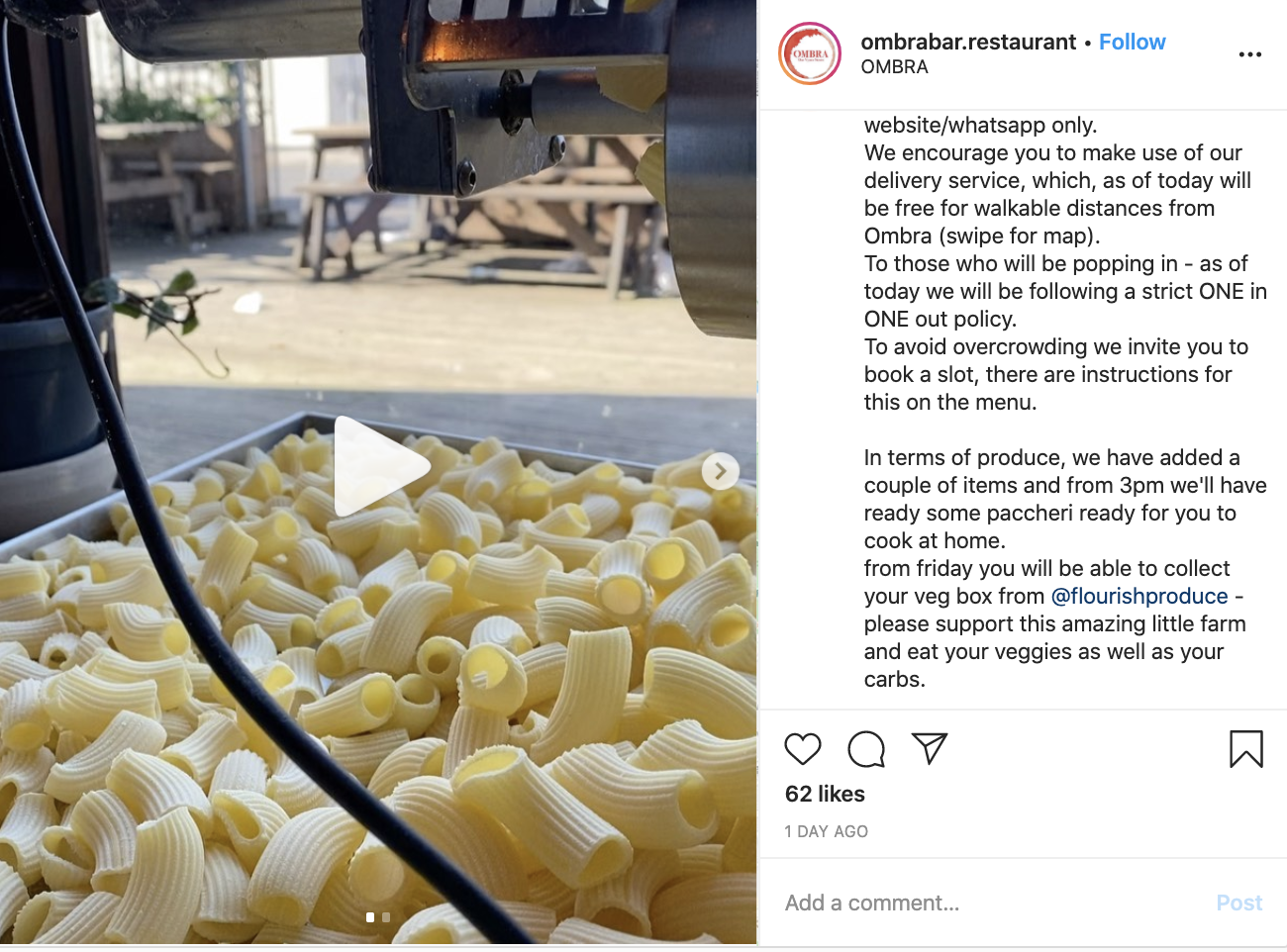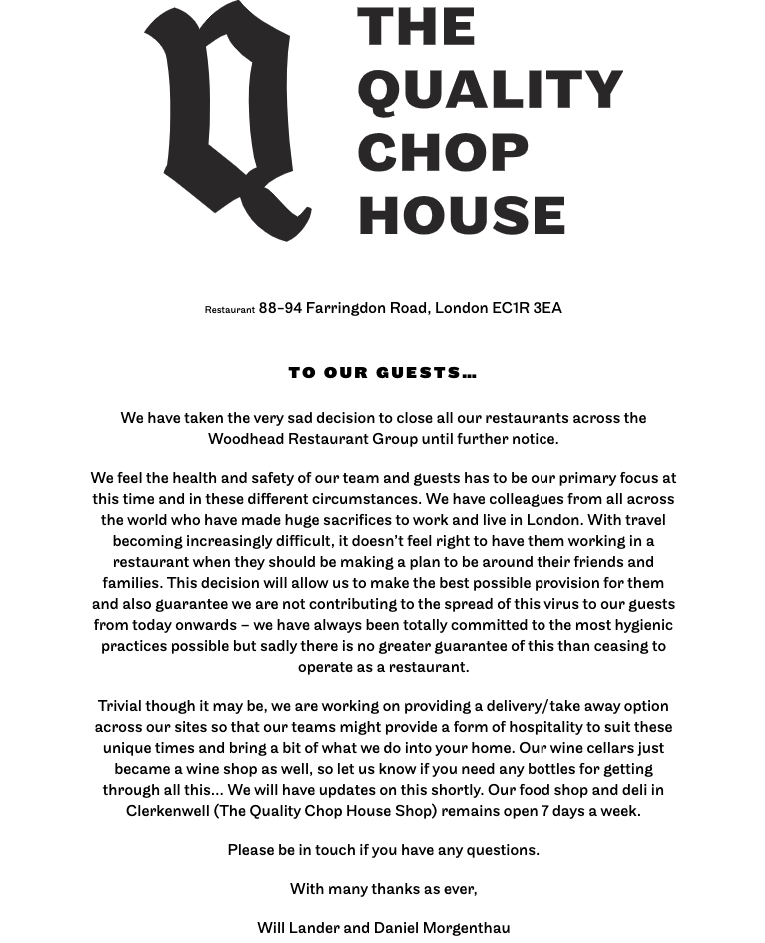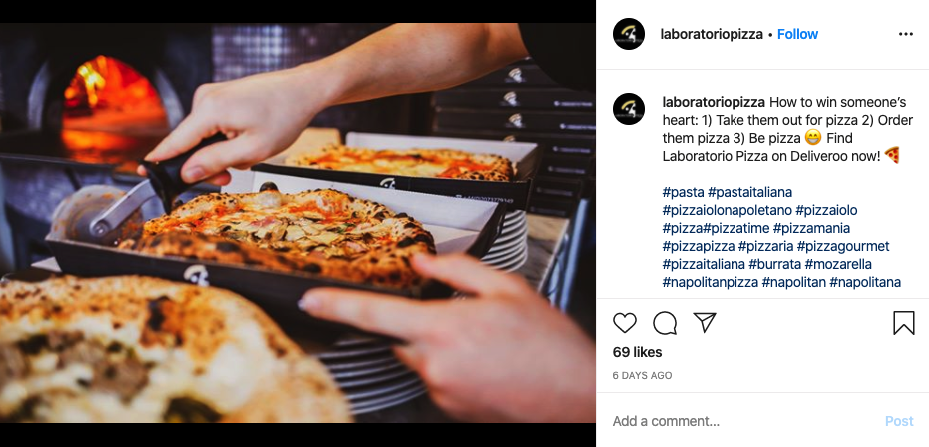

ARTICLE
Tips for moving to delivery and takeaway only in response to coronavirus
Our best wishes go out to all who are dealing with this challenging situation. As COVID-19 continues to upend the hospitality industry, our community matters more than ever. In the coming weeks, we’ll highlight restaurants that are continuing to feed their communities, how diners are supporting their local restaurants, and what we’re doing to support the industry. Head here for OpenTable’s preparedness resource center.
As some countries ban in-person dining to combat the spread of coronavirus, restaurants have been forced to change how they operate. Operators across the world are adapting their menus for takeaway and delivery so they can continue to keep the lights on and serve their communities.
Here are some tips for moving to delivery and pickup only in response to coronavirus.
Set up delivery now
After restrictions went into effect, restaurant owners are proactively adding delivery for their restaurants. Now is a smart time to implement delivery as restrictions continue to build, and some locales are limiting restaurants to takeaway only.
Luckily, companies are working to shorten the startup process for delivery. Uber Eats UK is waiving delivery activation fees, until 31 March, to help restaurants impacted by waning demand due to the coronavirus.
To reach the most diners, restaurants will likely want to look for a delivery provider with plenty of drivers and high demand.
Edit your menu to travel
Look at your current menu and see which items will be most conducive to being packed and transported. If necessary, add new ones that fit the bill.
Restaurants are offering standard and special menus. Consider adding healthy and filling options, as well as sticking to what you’re known for.
Create a special menu
Fine dining and tasting menu-only concepts may find that none of their dishes are suited for delivery. If you want to stay open, try something completely new. Consider creating a special to-go menu with simple salads, proteins (think fish and chips and roast chicken), and brownie desserts.
Pidgin offers a three-course meal to go Wednesday through Sunday, packaged to be reheated at home. The menu features items such as cold smoked mackerel, crispy fried cauliflower, fried pork pavé, and sticky toffee pudding.
Some restaurants are taking it a step further by opening new concepts such as a drive-thru burger spot, a donut or bagel shop, and family meal delivery (bottle of wine included.)
Control quality
Whether guests are in the restaurants or dining at home, the quality of the meal needs to stay high, ensuring that the dishes ordered are nothing short of delicious.
Writing about delivery for OpenTable, reporter Priya Krishna learned that salads and sandwiches tend to sell and travel well, and they are easily recognisable to a wide range of diners. Skip items sensitive to temperature changes, or any that need to be plated to truly shine. If you’re serving ramen or pho, for example, deliver noodles and broth in separate containers with instructions for reheating.
Create family meals
On your delivery menu, make it clear how many people each dish will serve. Many restaurants are creating new dishes specifically to feed families of two to four. In response to COVID-19 restrictions, some are offering bulk frozen soups or baked pastas.
Seasonal British restaurant Lupins clearly designates on their menu that salads feed 2 people and should be consumed within 2 days, mains feed 2 to 4, and sides feed 2.
Make it affordable
To make delivery a success, keep dishes as affordable as possible – £25 mains are a tough sell for delivery. An upscale city menu’s £20 pasta may not translate to delivery, where customers expect more options around £12 or even £8. Many restaurants are offering 10% discounts on delivery items, compared to the same dine-in dishes, to find a friendlier price point.
Offer pantry staples and meal kits
Seeing a need for pantry staples and a desire for local ingredients, cafes and restaurants are turning into food markets, selling toilet paper and napkins, dairy products, produce, meat, pastas, house-baked bread, bottled water, and wine.
Ombra is selling fresh pasta to cook at home, as well an antipasti, sauces, and wine, acting as a one-stop shop for dinner at home. “In terms of produce, we have added a couple of items and from 3pm we’ll have some paccheri ready for you to cook at home,” the team posted on Instagram. “From Friday you will be able to collect your veg box from @flourishproduce – please support this amazing little farm and eat your veggies as well as your carbs.”

Similarly, The Quality Chop House transitioned its wine cellar to become a wine shop.

Involve your staff
Keeping staff employed is a priority for many restaurant owners, so they can keep paying them a wage. Consider shifting the work of servers and wine experts, to help manage delivery orders, facilitate takeaway, or otherwise shift responsibilities.
Reduce person-to-person interaction
Consider collecting payment before takeaway or delivery to eliminate physical interaction between staff and diners. Many POS systems allow you to set up an online menu where diners can order and pay ahead of time. Pre-payments guarantee the payment and eliminate the need for staff and diners to touch a credit card.
Get the word out
Post a link to your delivery profile page on your social media channels, and email your guest database to let them know they can order from you (see email templates here). OpenTable restaurants can use our guest frequency report to find a list of everyone who visited during this time period last year. Email the group directly and invite them to order delivery or takeaway.
For instance, Laboratorio Pizza promotes their delivery service on Deliveroo with a playful message on Instagram.

To promote restaurants offering delivery and takeaway options, OpenTable works with partners to highlight those restaurants for diners. OpenTable also surfaces takeaway and delivery options options on restaurant profiles so restaurants can keep revenue streams open even when reservations aren’t available. Showcase your delivery and takeaway offerings by updating your profile. If you work with one of our partners and your delivery links are not appearing, emailaddonproducts@opentable.com.
OpenTable International Limited, a British company with its registered office at
Alphabeta Building, 14-18 Finsbury Square, London EC2A 1AH
© 2024 OpenTable